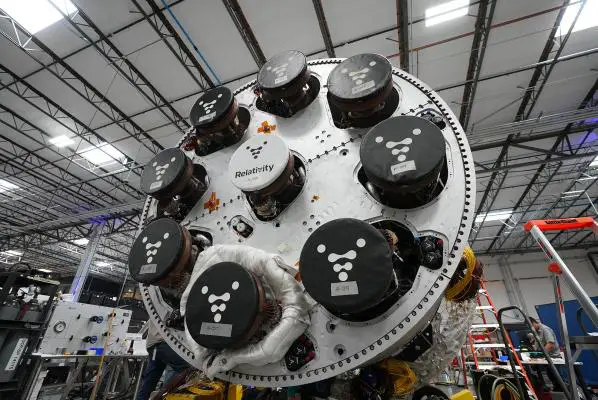Many rocket manufacturers have been using 3D printing technology to make components for spaceships for years. Only one firm, Relativity Space of Long Beach, has expanded on the technology to produce the first entirely printed rocket. After years of preparation and testing, Relativity founder Tim Ellis’ goal might be achieved as soon as June 1, according to the company.
In April, the company performed a 60-second full-duration mission duty cycle test at NASA’s Stennis Space Center for stage two of its Terran 1 rocket. It’s the first time a 3D-printed stage has been put through acceptability testing. In its statement, the corporation said, “A stage two full-length MDC is a pinnacle milestone in stage development.” “It demonstrates that all critical stage components (including the engine, structural, fluid systems, avionics, and software) can work in a flight-like condition,” according to the report.
Additionally, Relativity completed the acceptance testing for all nine of the Aeon 1 engines that were used in stage one of the rocket. In January, the firm accomplished Aeon’s first full-duration mission duty cycle, which lasted 310 seconds. Both stages will now be transported to Cape Canaveral’s Relativity launch pad, LC-16. Relativity finalized its file with the Federal Communications Commission for its initial launch with a launch window of June 1 through December, based on its prior accomplishments. While the Terran 1 might arrive as early as June 1, the company has yet to confirm a launch date.
In an email sent Wednesday, the business stated, “We will be sharing a more comprehensive timeframe as we move through additional testing/shipping soon.” According to the business, the first voyage will not carry a client payload. The objective is to “show that a rocket that has been completely 3D printed can fly, and then show that it can carry payloads.”
If the mission is a success, the company says it will move fast to launch other satellites for a variety of clients, including NASA. According to the business, the Terran 1 is the world’s newest 3D-printed object, at 110 feet tall and 7.5 feet broad. To do this, the company built the Stargate, the world’s biggest 3D printer, which is now producing the rocket and its components in a facility at the Pacific Edge industrial park.
The company is building a new headquarters in the old Boeing C-19 production hangar, and it just announced that part of the construction, including office space, had been completed. Relativity is also working on the Terran R, a bigger version of the Terran 1 that will be the world’s first entirely reusable 3D-printed rocket. The first Terran R mission is scheduled to launch in 2024.
Source: BusinessTimes

